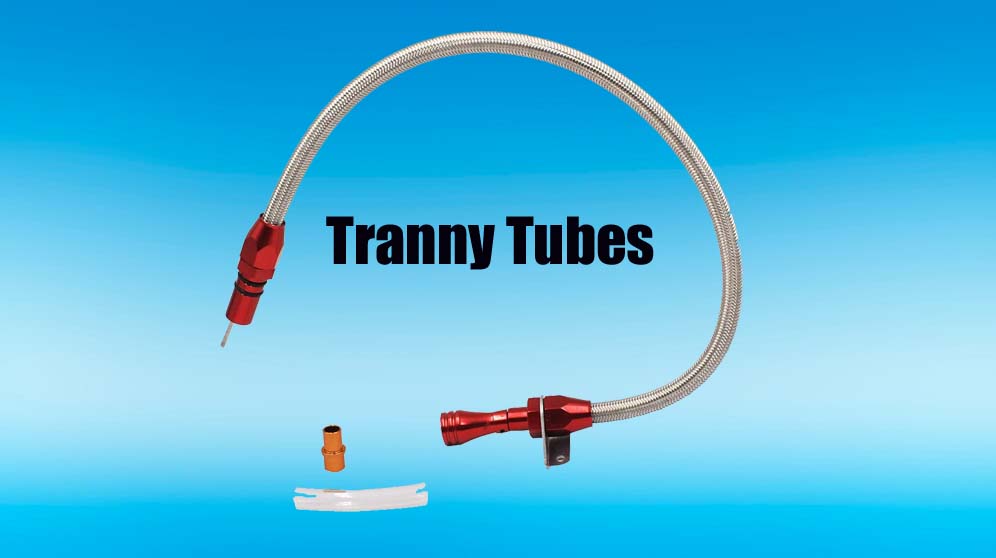Transmission systems are the backbone of any vehicle’s performance, ensuring smooth gear shifts and efficient power transfer from the engine to the wheels. Among the crucial components of a transmission system, tranny tubes (transmission tubes) play a significant role. This article delves into the importance of tranny tubes, their function, maintenance tips, and how to choose the right ones for your vehicle.
What Are Tranny Tubes?
Definition and Function
Tranny tubes, or transmission tubes, are integral parts of a vehicle’s transmission system. These tubes are responsible for the transmission fluid’s flow, ensuring that the fluid reaches all necessary components for lubrication, cooling, and pressure control.
Types of Tranny Tubes
- Transmission Cooler Lines
- These tubes carry transmission fluid to and from the transmission cooler to maintain optimal temperature.
- Vacuum Modulator Tubes
- These tubes connect the transmission to the vacuum modulator, which helps regulate shifting based on engine load.
- Dipstick Tubes
- These tubes house the dipstick, allowing for easy checking and refilling of transmission fluid.
Importance of Tranny Tubes in Vehicle Performance
Maintaining Fluid Flow
Tranny tubes ensure that transmission fluid is evenly distributed, which is crucial for the smooth operation of the transmission system. Proper fluid flow helps prevent overheating and reduces wear and tear on components.
Cooling the Transmission
By transporting fluid to the transmission cooler, tranny tubes help maintain the fluid at an optimal temperature. Overheated transmission fluid can lead to reduced efficiency and potential damage.
Ensuring Proper Lubrication
Adequate lubrication is essential for minimizing friction and preventing damage to the transmission’s moving parts. Tranny tubes facilitate this by ensuring a continuous flow of fluid to all necessary areas.
Common Issues
Common Issues with Tranny Tubes
Leaks and Cracks
Over time, tranny tubes can develop leaks or cracks due to wear and tear, exposure to high temperatures, and pressure fluctuations. Leaking transmission fluid can lead to insufficient lubrication, overheating, and eventually, transmission failure.
Blockages
Debris and sludge can accumulate in tranny tubes, causing blockages that restrict fluid flow. Blockages can result in poor transmission performance and overheating, as the fluid is unable to circulate properly.
Corrosion
Metal tranny tubes are susceptible to corrosion, especially if they are exposed to harsh environmental conditions or if the transmission fluid is not replaced regularly. Corrosion can weaken the tubes, making them more prone to leaks and breakage.
Maintenance Tips for Tranny Tubes
Regular Inspections
Regularly inspect tranny tubes for signs of wear, leaks, and corrosion. Look for any visible cracks or splits, and ensure that the tubes are securely connected.
Fluid Checks and Changes
Regularly check the transmission fluid level and quality. Low or dirty transmission fluid can accelerate wear and tear on the tranny tubes. Follow your vehicle manufacturer’s recommendations for fluid change intervals to keep the system running smoothly.
Cleaning and Flushing
Periodically flush the transmission system to remove any debris or sludge that might have accumulated. This helps prevent blockages and ensures that the fluid can flow freely through the trannytubes.
Use Quality Parts
When replacing trannytubes, use high-quality parts that are compatible with your vehicle. Investing in good quality tubes can prevent frequent issues and extend the lifespan of your transmission system.
How to Choose the Right Tranny Tubes
Material
Trannytubes are typically made from metal, rubber, or synthetic materials. Metal tubes are durable and resistant to high temperatures, but they can be prone to corrosion. Rubber and synthetic tubes are flexible and resistant to corrosion but may not withstand high temperatures as well as metal tubes. Choose the material based on your vehicle’s needs and operating conditions.
Fit and Compatibility
Ensure that the trannytubes you choose are compatible with your vehicle’s make and model. Using tubes that do not fit properly can lead to leaks and inefficient fluid flow.
Brand Reputation
Opt for trannytubes from reputable brands that are known for their quality and durability. Check reviews and ratings to gauge customer satisfaction and product performance.
Warranty
Look for tranny tubes that come with a warranty. A warranty can provide peace of mind and protection against defects and premature failures.
Replacing Tranny Tubes: A Step-by-Step Guide
Tools and Materials Needed
- New trannytubes
- Transmission fluid
- Wrenches and pliers
- Drain pan
- Funnel
- Clean cloth
Steps to Replace Tranny Tubes
- Prepare the Vehicle
- Park the vehicle on a level surface and engage the parking brake. Ensure the engine is cool before starting the replacement process.
- Drain the Transmission Fluid
- Place a drain pan under the transmission and remove the drain plug to let the fluid drain out completely. Dispose of the old fluid properly.
- Remove the Old Tubes
- Using wrenches and pliers, disconnect the old tranny tubes from the transmission and cooler. Carefully remove the tubes, ensuring not to damage any surrounding components.
- Install the NewTubes
- Connect the new tranny tubes to the transmission and cooler, ensuring a secure fit. Tighten the connections with wrenches to prevent leaks.
- Refill the Transmission Fluid
- Using a funnel, refill the transmission with the recommended type and amount of fluid. Check the fluid level with the dipstick and top up if necessary.
- Check for Leaks
- Start the engine and let it run for a few minutes. Check the connections for any signs of leaks and tighten them if needed.
- Test Drive
- Take the vehicle for a test drive to ensure the transmission is functioning properly and there are no leaks or performance issues.
Conclusion
Tranny tubes are a vital component of a vehicle’s transmission system, playing a crucial role in maintaining fluid flow, cooling, and lubrication. Regular maintenance, including inspections, fluid checks, and cleanings, can prevent common issues such as leaks, blockages, and corrosion. When it’s time to replace trannytubes, choosing high-quality, compatible parts is essential for ensuring optimal performance and longevity of your transmission system. By understanding and caring for your tranny tubes, you can keep your vehicle running smoothly and efficiently.
FAQs
- How often should trannytubes be replaced?
Trannytubes should be inspected regularly and replaced if any signs of wear, leaks, or damage are detected. There is no specific replacement interval, but they should last several years with proper maintenance.
- Can I replace trannytubes myself, or should I seek professional help?
If you have mechanical experience and the necessary tools, you can replace trannytubes yourself. However, if you’re unsure, it’s best to seek professional help to avoid potential issues.
- What are the signs of a failing tranny tube?
Common signs include transmission fluid leaks, low fluid levels, unusual noises, overheating, and poor transmission performance.
- Can using the wrong transmission fluid damage trannytubes?
Yes, using the wrong type of transmission fluid can lead to inadequate lubrication and cooling, causing damage to the trannytubes and other transmission components.
- Are aftermarket tranny tubes as good as OEMtubes?
Aftermarket trannytubes can be just as good as OEMtubes if they are made by reputable brands and meet the necessary quality standards. Always research and choose trusted manufacturers.











